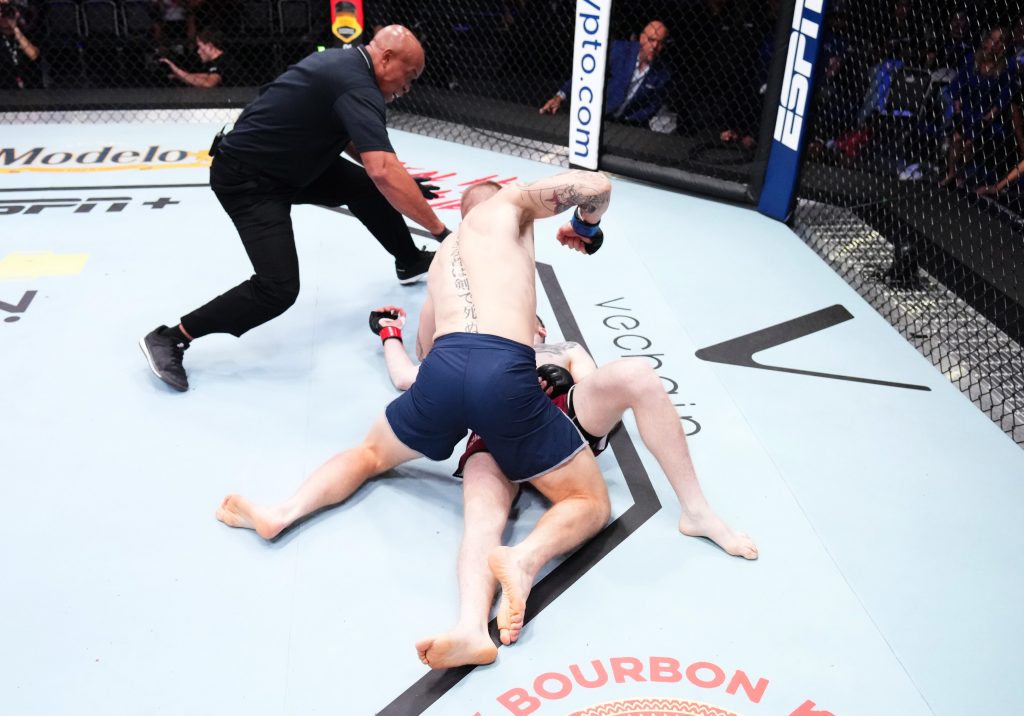Could Group-Organized Violence Be Rooted in Empathy?

This article contributes to the debate, “Why Are Humans Violent?“
The Samburu people, pastoralists who live in northern Kenya’s semiarid lands, have a rich oral tradition recounting stories of their ancestors. In the late 19th century, one story goes, as a party of Samburu warriors were attacking the homesteads of Borana pastoralists, one Borana family made a hard decision: It left behind a grandfather who was too weak to run, along with his teenage grandson to help the old man as they braved their chances with the invaders. Fearing for his grandson, the man approached his enemies and said, “Do what you like with me, but please adopt my grandson.” Both were spared.
The histories of human societies are often filled with tales of warfare. Yet stories of mercy are also common in historical traditions globally, persisting into the present. During the world wars, for example, some soldiers reportedly laid down their weapons upon making eye contact, noting their similarities in age or even bonding over a shared love of cigarettes.
Humans are unique in acting on empathy during group-organized violence. Empathy is the ability to intuit and experience feelings similar to those expressed by other individuals. It may be acted upon altruistically, including through war-zone mercy. Chimpanzees, a primate species that shares both our human capacity for warfare and for empathic concern, do not show the ability to pause and express empathy in the midst of cooperative violence. Stress gestures and pained vocalizations such as screaming do not stop chimpanzees from attacking to the point of death.
Why do humans engage in war-zone mercy? It turns out that we may show mercy to our enemies for the same evolutionary reasons that we kill them: empathy.
Empathy is a powerful force. Social psychologists Anneke Buffone and Michael Poulin have shown that in both real-world and experimental conditions involving conflict or college tests with high stakes, humans are willing to engage in aggressive behavior even toward strangers in order to benefit or protect those for whom they feel empathy. The authors identify a biological mechanism to support these cultural interactions: Variations in the receptor genes of two hormones, vasopressin and oxytocin, have been associated with different levels of empathy-motivated aggression.
My colleagues and I have recently presented biological evidence that is also relevant to empathy and aggression. Our findings show an association between some Samburu combat behaviors, including mercy, and modifications to DNA molecules, which can influence gene expression. This work connects biology to culturally shaped individual choices in Samburu men who engage in lethal combat or show mercy. These men may be empathically motivated to kill on behalf of their community or show mercy toward human enemies even at risk to themselves.
From an evolutionary point of view, empathy provides the motivation that holds social relationships together—mothers to children, neighbors to neighbors. Humans have evolved to feel and act on empathy in ways that no other species seems to match, beginning in mutually empathic relationships between infants and caregivers. Anthropologists Sarah Blaffer Hrdy and Kristen Hawkes believe that natural selection may have favored well-honed empathy skills to support co-parenting, including by grandparents. But empathy is two-sided. In driving us to help, it also encourages empathy-motivated aggression on behalf of those who need help.
Perhaps warfare is a byproduct of the more basic, flexible toolkit of empathically driven behaviors shared by human females and males looking out for their own. Human’s highly developed capacity for empathy may have provided the intensely emotional social bonds necessary for coordinated, lethal killing by groups of humans. In other words, with sufficient cultural complexity, empathy-motivated aggression necessary to protecting one’s own may have been harnessed by groups of humans for socially cooperative forms of lethal violence.
The persistence of war-zone mercy is a reminder that strong empathy skills gave humans an evolutionary, cooperative edge. The capacity for both empathy-motivated aggression and compassion means that empathy provided the foundation for the best and worst that humans are capable of. The root of some violence, and some cooperation, may be one and the same.

































